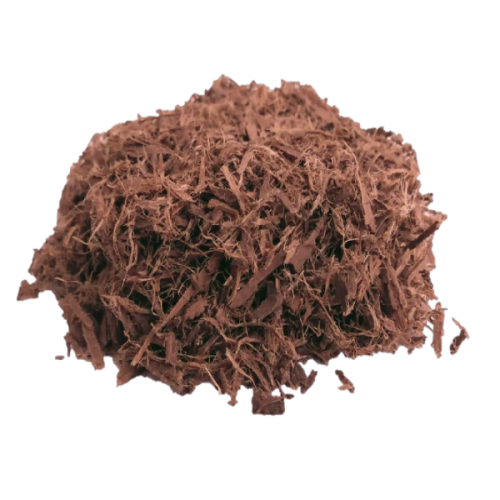Mimosa Hostilis Root Bark holds a major location in standard procedures and present day botanical apps. This text explores the traits, origins, and customary concerns bordering this impressive plant substance, with a specific focus on the prized Brazillian Mimosa Hostilis Root Barks.
Exactly what is Mimosa Hostilis Root Bark?
Mimosa Hostilis, scientifically often known as Mimosa tenuiflora, is often a perennial tree indigenous towards the northeastern region of Brazil and elements of Mexico. The basis bark of this tree has long been made use of for centuries by indigenous communities for various useful and classic needs. The interior root bark has noteworthy concentrations of tannins, alkaloids, as well as other phytochemicals that add to its unique properties and purposes.
The tree alone is remarkably resilient, effective at surviving in poor soils and drought ailments. This hardiness contributes for the sturdy mother nature in the bark and its chemical profile. When harvested sustainably, the outer root bark is cautiously separated to entry the valuable inner bark, which happens to be then dried and ready for use.
Brazilian Mimosa Hostilis Root Bark: The Gold Regular
When discussing top quality in Mimosa Hostilis merchandise, the Brazillian Mimosa Hostilis Root Barks are commonly thought of exceptional in the botanical sector. Several aspects contribute to this popularity:
Best Increasing Problems
The particular soil composition, weather, and ecosystem of Brazil's northeastern region produce ideal conditions for Mimosa tenuiflora to produce its full chemical opportunity. The mineral-rich soils and particular sample of rainfall and sunlight in this area look to reinforce the focus of Energetic compounds in the root bark.Common Harvesting Know-how
In areas where Mimosa Hostilis has long been applied typically, harvesters have made advanced techniques for sustainable harvesting that preserves the two the tree as well as potency of the bark. This awareness, passed down via generations, ensures that the bark is collected at the ideal time of year and processed making use of strategies that sustain its integrity.Exclusive Physical Features
Brazilian Mimosa Hostilis Root Bark usually shows a prosperous reddish-brown to purple internal bark by using a fibrous, dense texture. The visual features often serve as an Preliminary indicator of high-quality, with seasoned buyers recognizing the distinct visual appearance of bark from this location.
Common Apps and Makes use of
The applications of Mimosa Hostilis Root Bark span equally standard and modern contexts, while It really is important to be familiar with the lawful status of these utilizes varies by country and jurisdiction.
Regular Craft and Practice
Indigenous communities have Traditionally utilised Mimosa Hostilis Root Bark for creating normal dyes for textiles, with the bark developing wonderful shades of purple, burgundy, and deep brown. The tannin-abundant Homes also designed it valuable for leather tanning and various sensible purposes.Modern day Botanical Research
Contemporary fascination in Mimosa Hostilis Root Bark extends to varied fields of botanical exploration, especially learning its chemical composition and likely programs. Scientists have recognized quite a few intriguing compounds within the bark that warrant even further scientific investigation.Horticultural and Agricultural Uses
In permaculture and sustainable agriculture, Mimosa tenuiflora is valued as being a nitrogen-fixing species which can improve soil quality. The bark by itself, when processed, can be employed as being a pure mulch or soil amendment in selected agricultural contexts.Good quality Evaluation and Identification

For anyone dealing with Mimosa Hostilis Root Bark, knowing the way to evaluate high-quality is vital. Higher-good quality materials, notably reliable Brazillian Mimosa Hostilis Root Barks, generally exhibits selected characteristics:
The Visible Mimosa Hostilis Root Bark physical appearance ought to demonstrate a transparent distinction in between the outer and interior bark, Together with the inner bark displaying deep, vivid colours. The fabric ought to have a characteristic earthy, a little bit sweet aroma, cost-free from musty or moldy notes. When processed, the bark ought to generate a great powder even though preserving its fibrous framework right until grinding. Properly dried bark need to be brittle although not dusty, indicating right humidity content material.
Usually Requested Thoughts (FAQs)
1. What's the difference between Mimosa Hostilis Root Bark from Brazil along with other regions?
Brazilian Mimosa Hostilis Root Bark is normally thought of excellent a result of the optimum increasing conditions in northeastern Brazil, which result in greater concentrations of active compounds. The normal harvesting solutions applied in this area also add to the overall good quality and potency of the ultimate product.two. How need to I retailer Mimosa Hostilis Root Bark to take care of its good quality?
Retailer the bark inside of a cool, darkish, and dry put in an airtight container. Protection from light, humidity, and Serious temperature fluctuations will help preserve the bark's chemical integrity and forestall degradation of its Energetic parts.3. Is Mimosa Hostilis an endangered species?
No, Mimosa tenuiflora is not really now mentioned as an endangered species. The truth is, It is noted for its resilient progress and talent to thrive in hard conditions. Having said that, accountable harvesting techniques remain important to ensure the sustainability of wild populations.four. Can I increase Mimosa Hostilis outside of its indigenous habitat?
Even though Mimosa tenuiflora thrives ideal in its indigenous tropical weather, it could be cultivated in comparable environments. The tree demands perfectly-drained soil, plenty of daylight, and defense from frost. However, the chemical profile of cultivated specimens could differ from wild-harvested Brazilian materials.five. Exactly what is the lawful standing of Mimosa Hostilis Root Bark?
The authorized standing differs drastically by place and jurisdiction. In certain sites, the raw bark is lawful to have, when in Other folks, unique extracts or preparations may very well be controlled. Always analysis and comply with community legal guidelines and regulations ahead of buying or using any botanical compound.Comprehending Mimosa Hostilis Root Bark, specially the high quality Brazillian Mimosa Hostilis Root Barks, requires appreciation of its botanical properties, conventional context, and appropriate apps. No matter whether for research, craftsmanship, or botanical examine, this impressive plant material continues to be a matter of curiosity throughout a number of fields, though constantly within acceptable lawful and ethical boundaries.